Saturday, June 19, 2004
Billon antoninianus, Gallienus, Antioch, Göbl 1643b
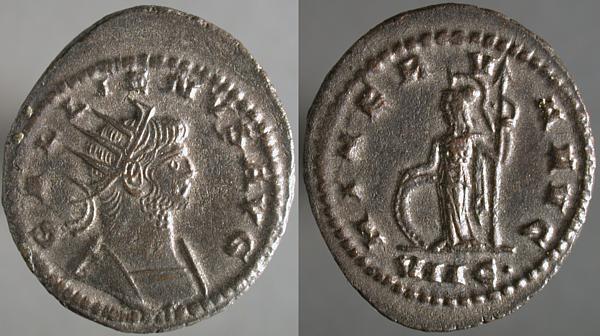
GALLIENVS AVG, Radiate cuirassed bust right | MINERVA AVG, Minerva standing facing, head left, holding spear right and shield left. VIIC· in exergue.
Minerva is the Roman name for Athena, maiden goddess of wisdom, and of war.
Friday, June 18, 2004
Æ29, Side in Pamphylia, Gallienus, SNG France 919
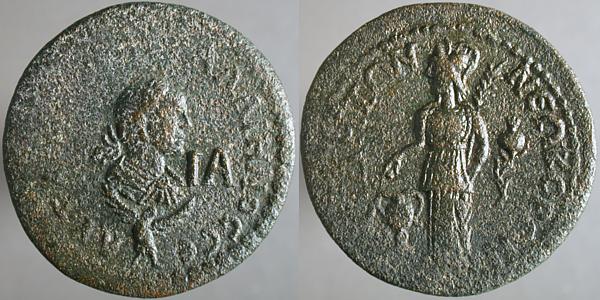
ΑΥΤ Κ[ΑΙ ΠΟΥ ΛΙΕ ΓΝ Γ]ΑΛΛΙΗΝΟC CΕ, Laureate draped cuirassed bust right, over eagle facing with wings spread, IA before | CΙΔΗΤΩΝ ΝΕΩΚΟΡΩΝ, Athena standing facing, head left, holding palm right, dropping pebble into amphora left. Pomegranate on stem behind.
Athena, a goddess associated with wisdom and with war, here demonstrates the Roman vote. In some cases a pottery shard would have a name written on it, and be dropped into a container. In simple cases, yes or no could be signified by a white or black pebble, likewise dropped.
The pomegranate is often seen on coins of Side.
Thursday, June 17, 2004
Billon antoninianus, Gallienus, Mediolanum, Göbl 988r
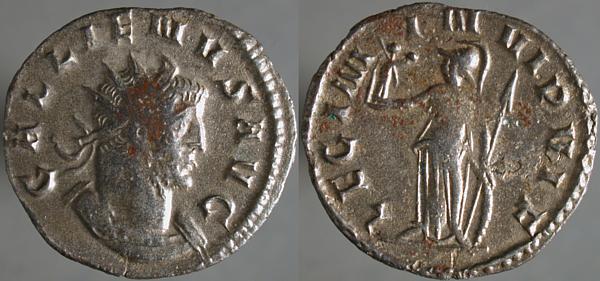
GALLIENVS AVG, Radiate cuirassed bust right | LEG I MIN VI P VI F, Minerva standing facing, head left, holding Victory left and spear right. Shield at feet right.
Another coin of the "legionary series", this one honoring Legio I Minervia, founded by the emperor Domitian. I posted an Alexandrian dichalkon of Domitian yesterday, and will have a nice denarius of him for Wednesday coming.
Minerva was particularly favored by Domitian (or he by her), so it's no surprise that a legion he raised would be named for her.
Wednesday, June 16, 2004
Æ Dichalkon, Alexandria, Domitian, c.92 CE, Emmett 338(?)
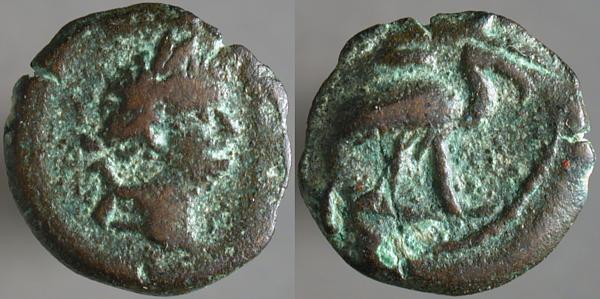
Laureate head right | Ibis stalking right. Regnal year obscure.
Emmett attests this reverse appearing during most of the years of Domitian's Egyptian coinage. Regnal year 11 (92-93 CE) is by far the most common so, in the absence of a legible date, that's my best guess for this.
Coins of Roman Egypt, particularly the smaller denominations, often featured animals that would have been familiar to the residents of the province.
Tuesday, June 15, 2004
Æ29, Syedra in Cilicia, Salonina, SNG Cop 256
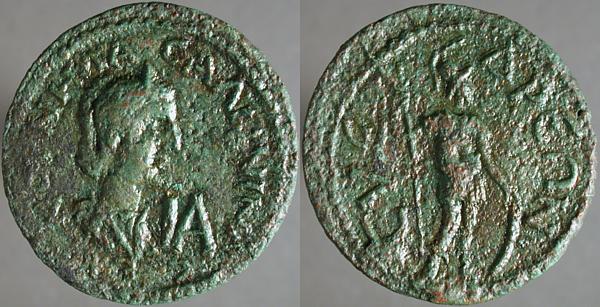
ΚΟΡΝΗΛΑ CΑΛΩΝΙΝΑ CΕΒ, Diademed draped bust right, IA before | CΥΕ_ΔΡΕΩΝ, Helmeted Ares standing facing, head right, holding spear left and shield right.
Ares is so commonly seen in this pose that I assume it was a widely known and often-copied statue, but I don't know the details of that work.
Monday, June 14, 2004
Billon antoninianus, Valerian, Viminacium, Göbl 811d
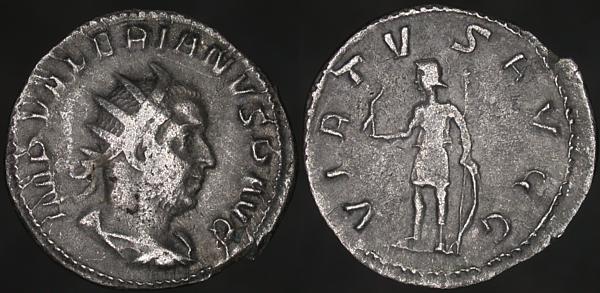
IMP VALERIANVS P AVG, Radiate draped cuirassed bust right | VIRTVS AVGG, Mars standing facing, head left, holding Victory left and spear and shield right.
Like Saturday's coin, an early issue in the joint reign of Valerian and Gallienus, of much better quality metal than would be seen again in the empire for many years. Minted at the same Viminacium that created some of the provincial coins I've posted recently.
The reverse features Mars receiving a wreath from Victory. Military valor has, it seems, proven successful.
Sunday, June 13, 2004
Æ29, Syedra in Cilicia, Gallienus, SNG Cop 252
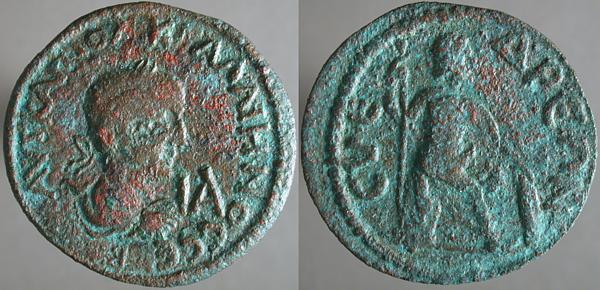
ΑΥΤ ΚΑΙ ΠΟ ΛΙΚ ΓΑΛΛΙΗΝΟC CΕ_Β, Laureate draped cuirassed bust right | CΥΕ_ΔΡΕΩΝ, Ares seated right on rock. holding spear left and shield right.
Syedra, today ruins between the Turkish villages of Kargycak and Seki, seems to have had a special affinity for Ares, Greek god of war, equivalent to the Roman Mars. Here he rests, briefly at peace.

